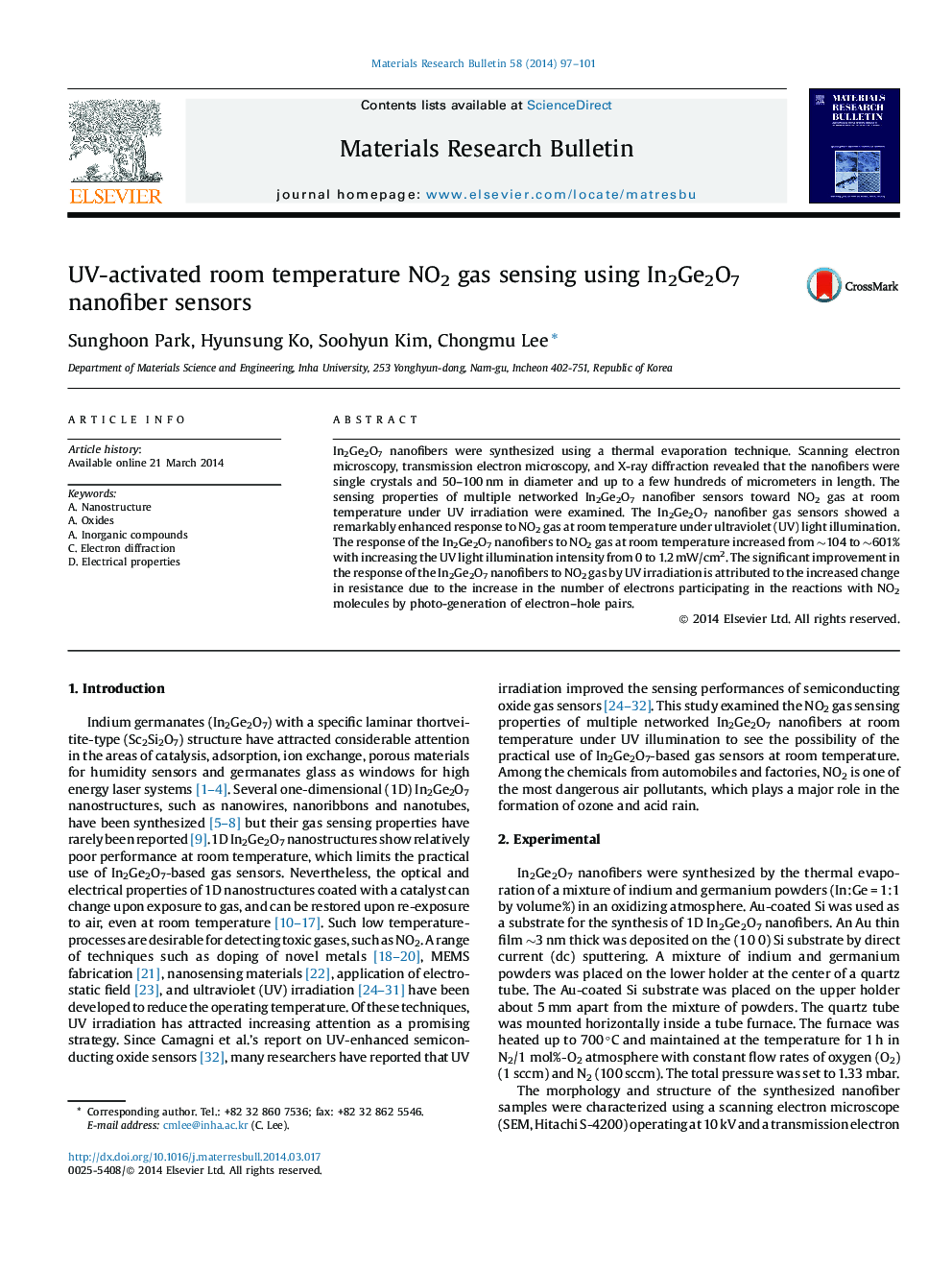| Article ID | Journal | Published Year | Pages | File Type |
|---|---|---|---|---|
| 1488312 | Materials Research Bulletin | 2014 | 5 Pages |
•In2Ge2O7 nanofibers were synthesized using a thermal evaporation technique.•The In2Ge2O7 nanofibers were single crystals and 50–100 nm in diameter.•The In2Ge2O7 nanofibers showed a remarkably enhanced response to NO2 gas under UV illumination.•The origin of the enhanced response by UV irradiation is discussed.
In2Ge2O7 nanofibers were synthesized using a thermal evaporation technique. Scanning electron microscopy, transmission electron microscopy, and X-ray diffraction revealed that the nanofibers were single crystals and 50–100 nm in diameter and up to a few hundreds of micrometers in length. The sensing properties of multiple networked In2Ge2O7 nanofiber sensors toward NO2 gas at room temperature under UV irradiation were examined. The In2Ge2O7 nanofiber gas sensors showed a remarkably enhanced response to NO2 gas at room temperature under ultraviolet (UV) light illumination. The response of the In2Ge2O7 nanofibers to NO2 gas at room temperature increased from ∼104 to ∼601% with increasing the UV light illumination intensity from 0 to 1.2 mW/cm2. The significant improvement in the response of the In2Ge2O7 nanofibers to NO2 gas by UV irradiation is attributed to the increased change in resistance due to the increase in the number of electrons participating in the reactions with NO2 molecules by photo-generation of electron–hole pairs.
Graphical abstractThe In2Ge2O7 nanofiber gas sensors showed a remarkably enhanced response to NO2 gas at room temperature under ultraviolet (UV) light illumination. The response of the In2Ge2O7 nanofibers to NO2 gas at room temperature increased from ∼104 to ∼601% with increasing the UV light illumination intensity from 0 to 1.2 mW/cm2.Figure optionsDownload full-size imageDownload as PowerPoint slide
